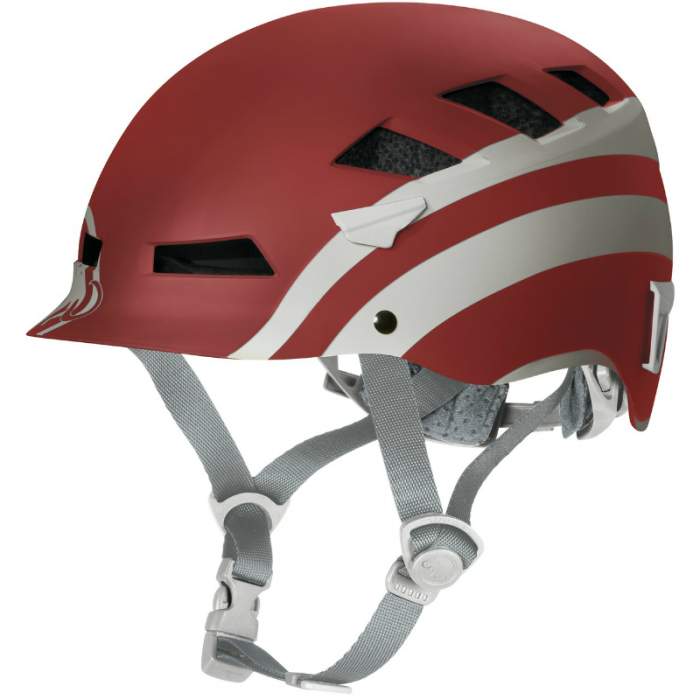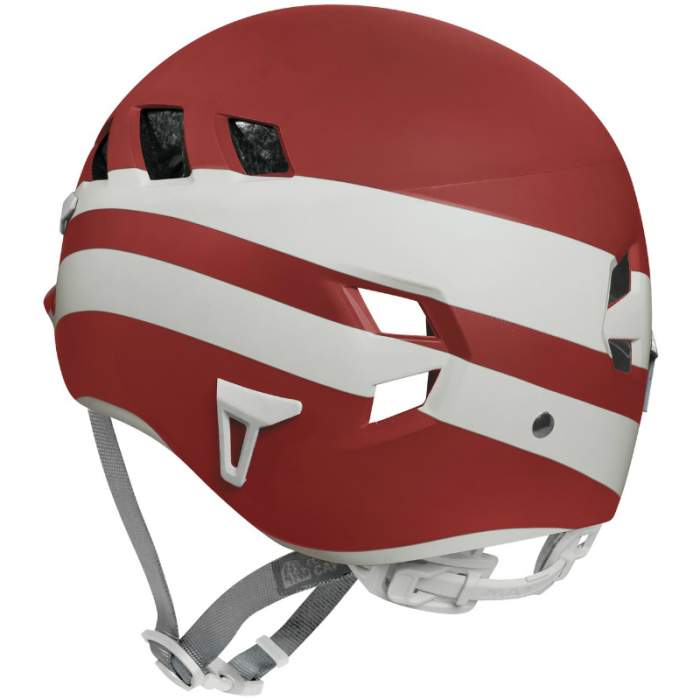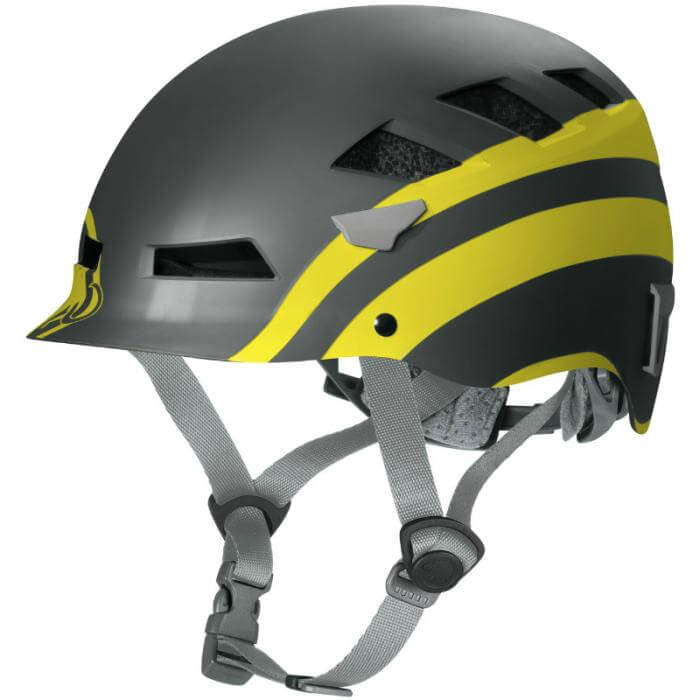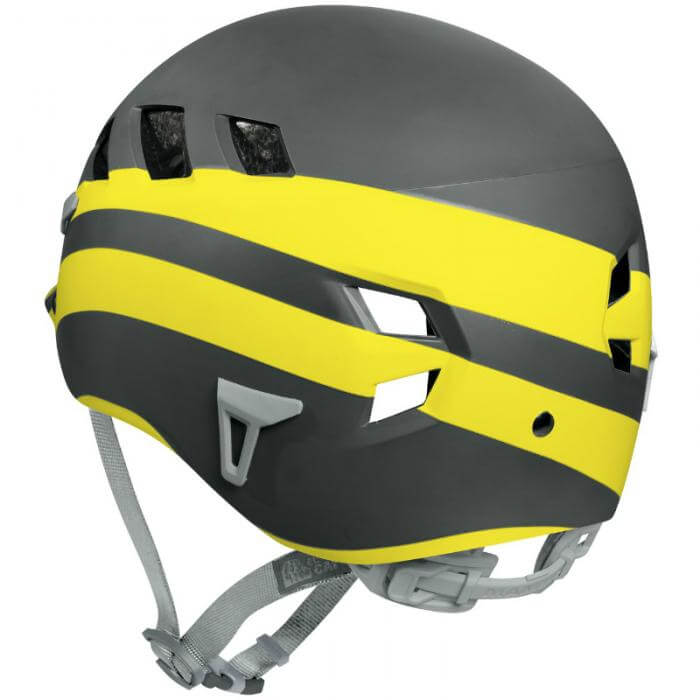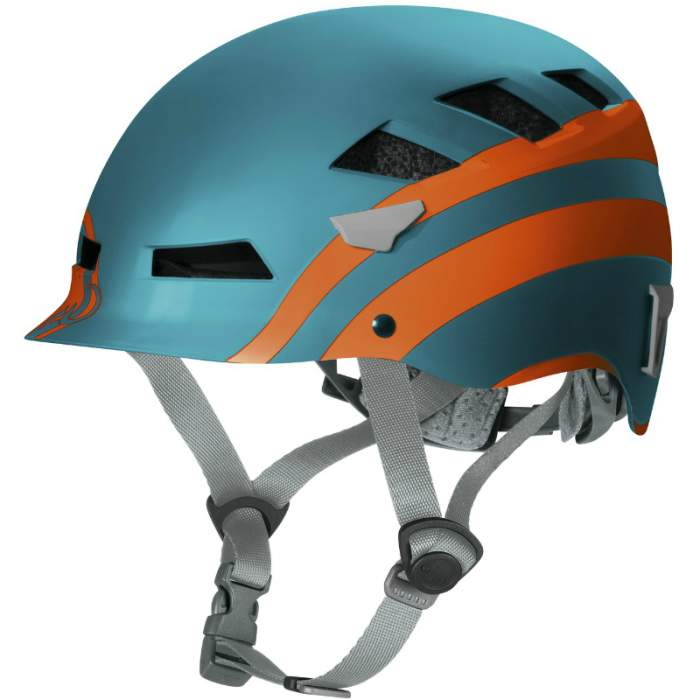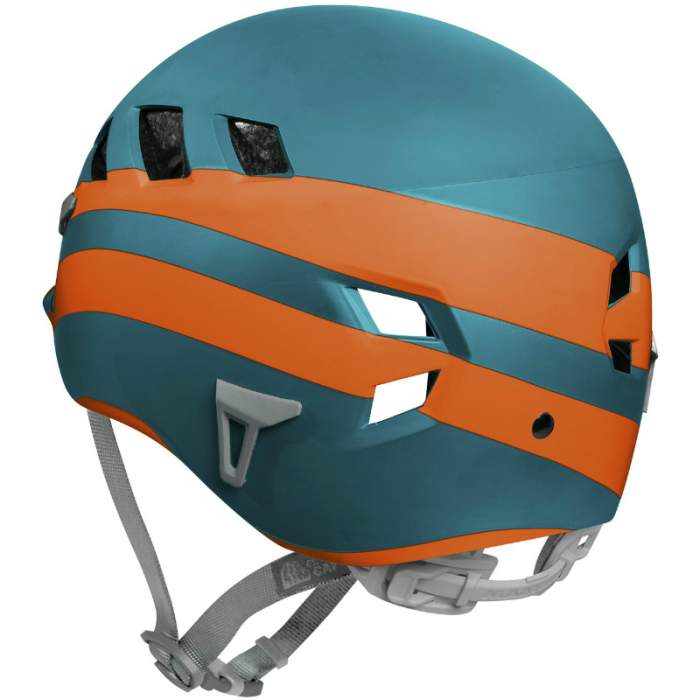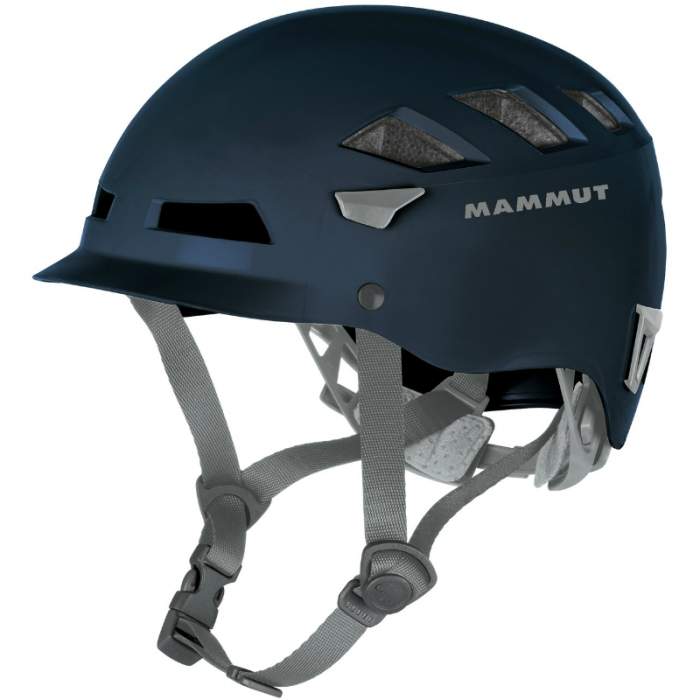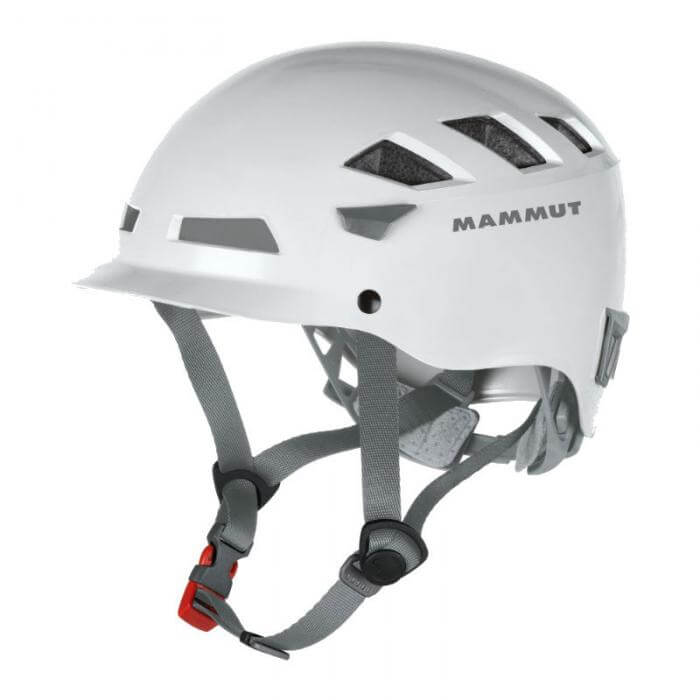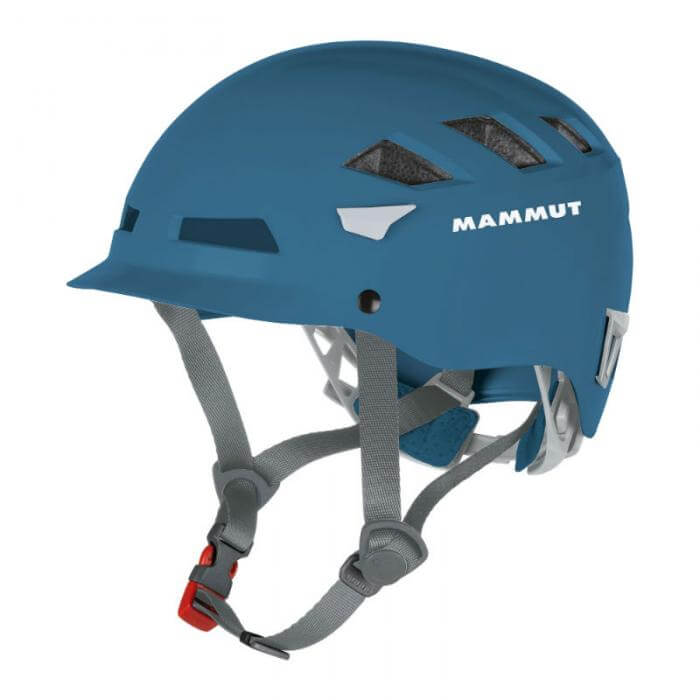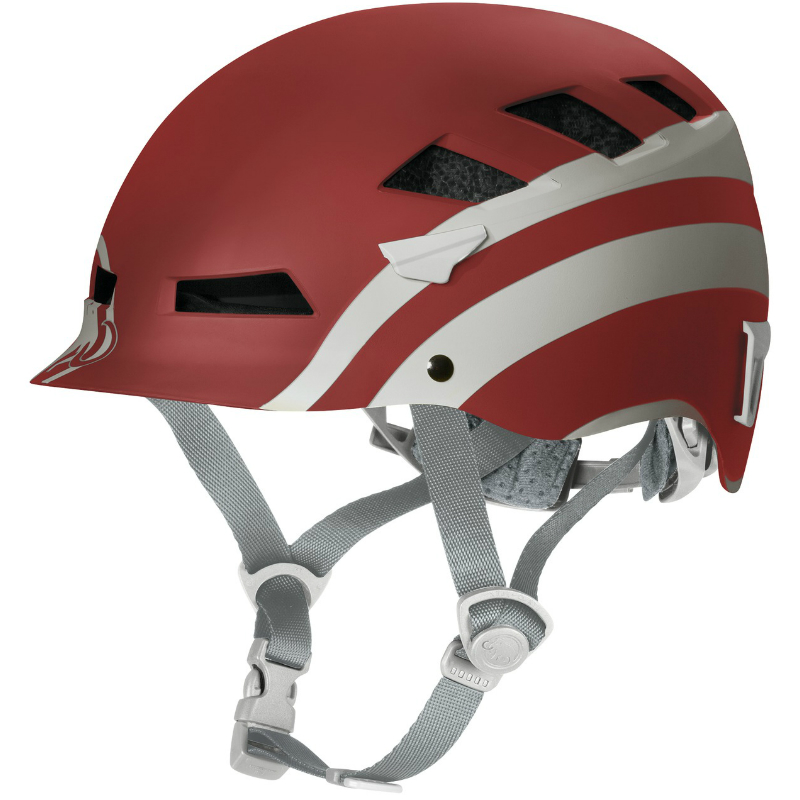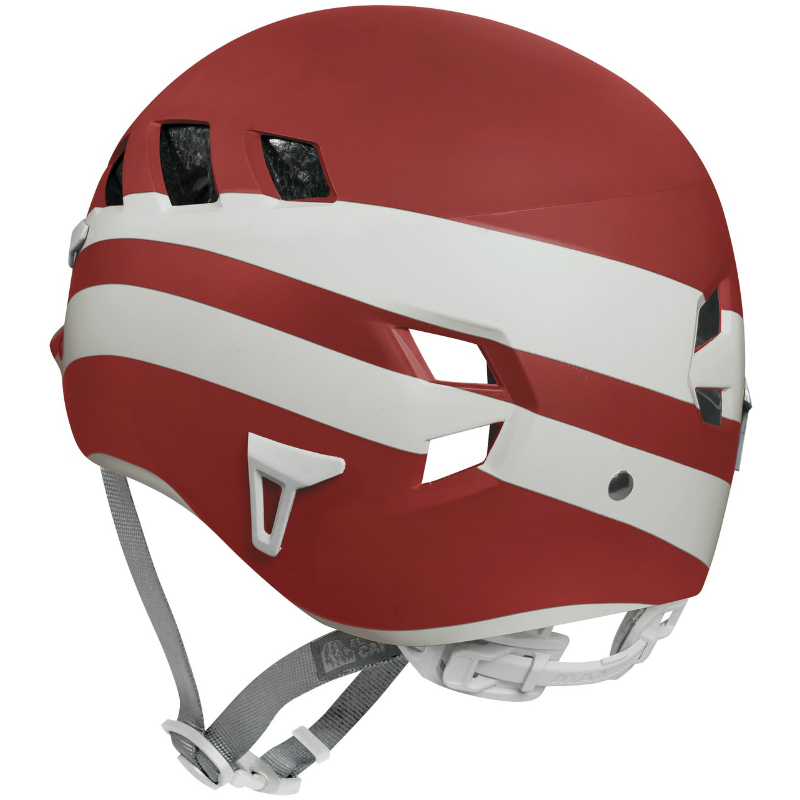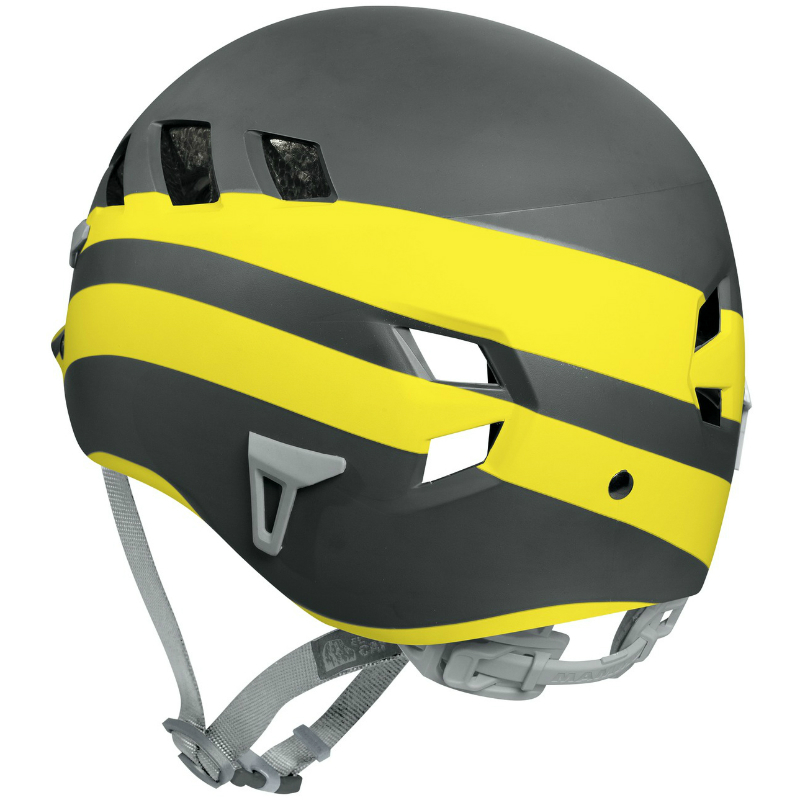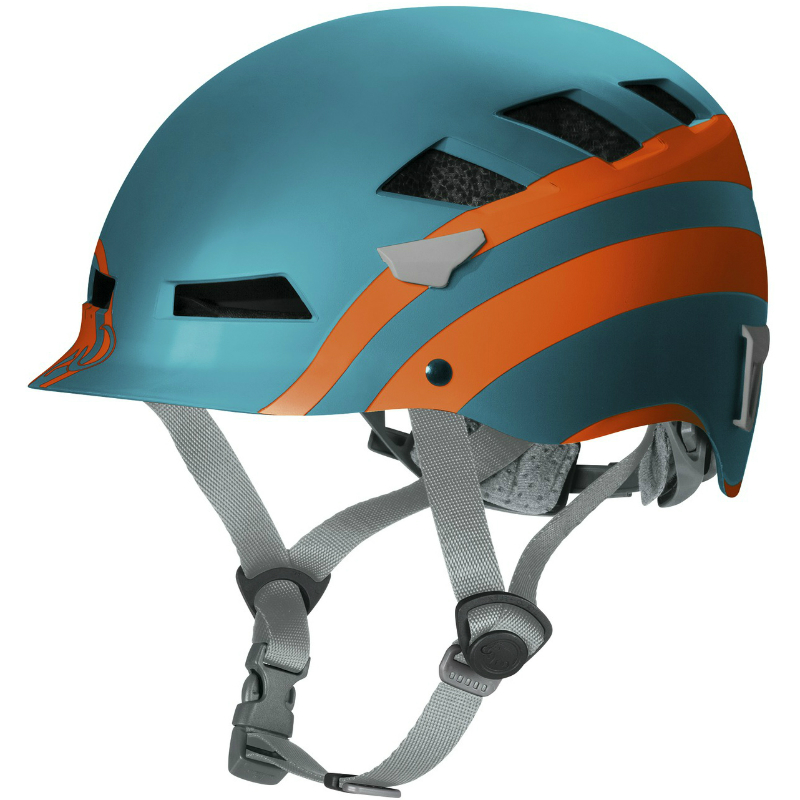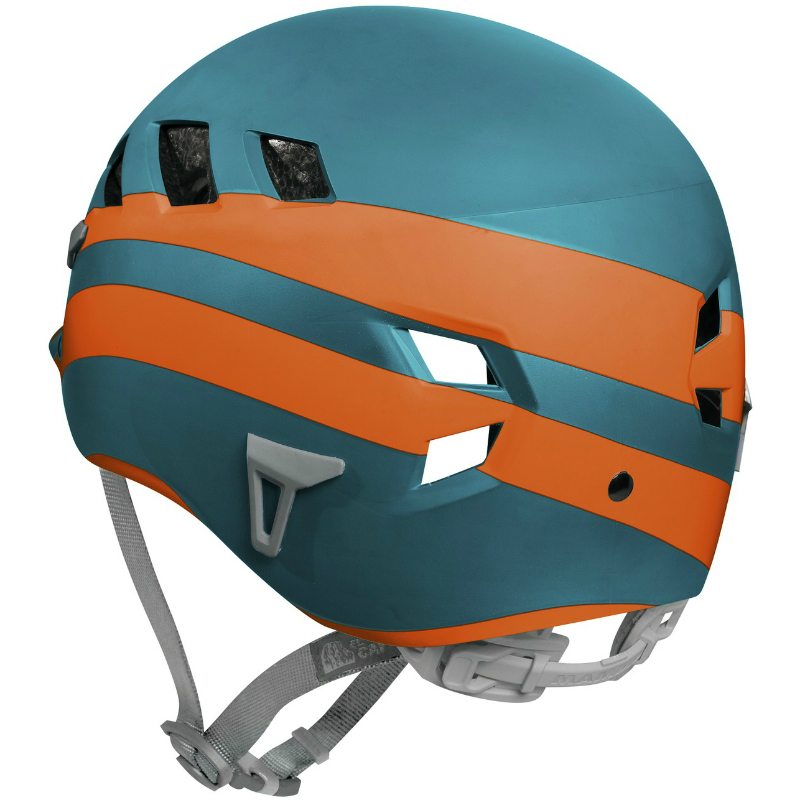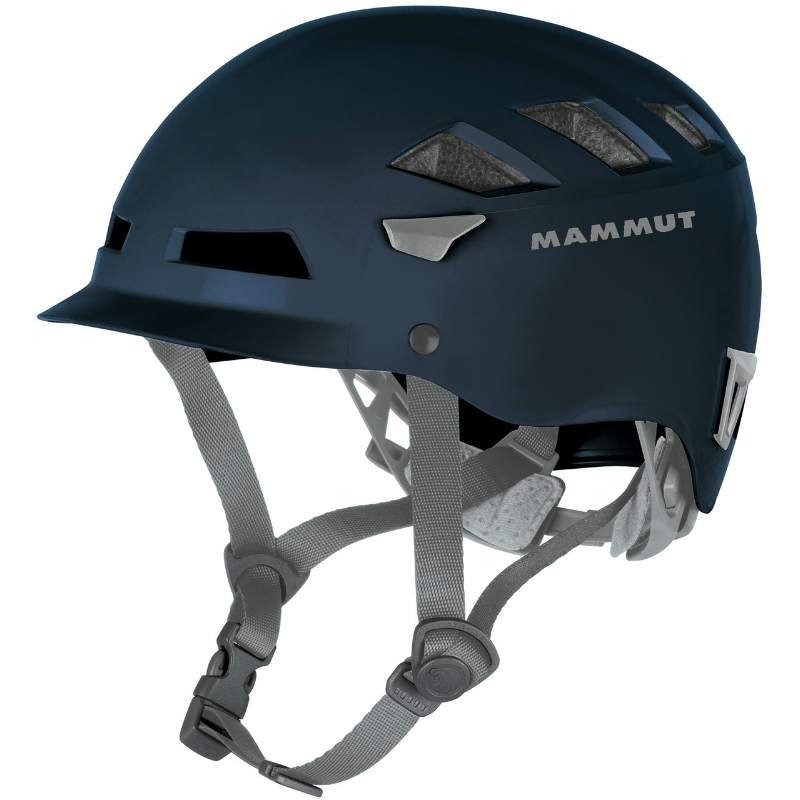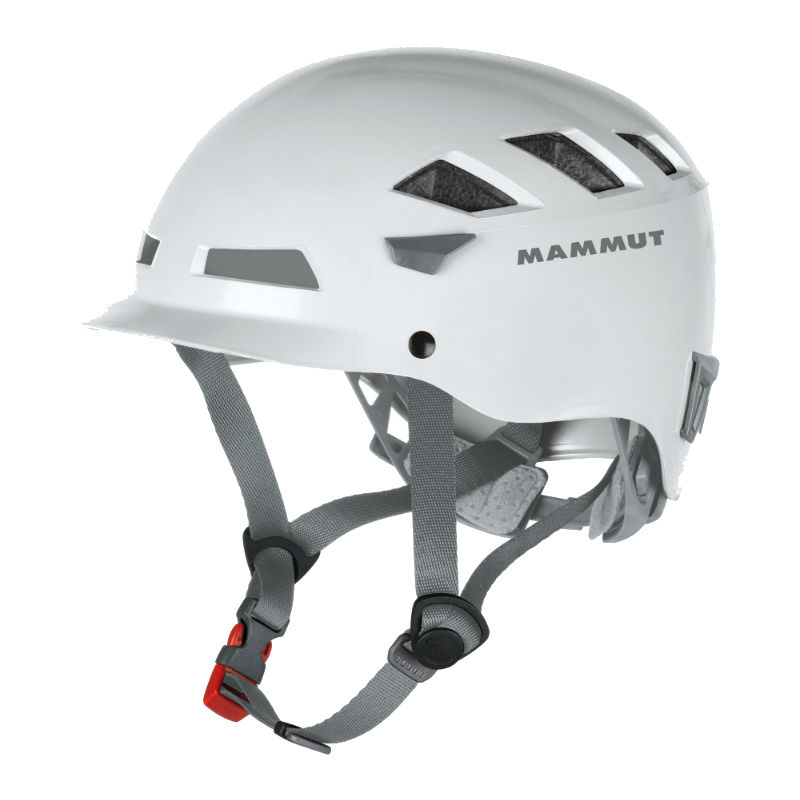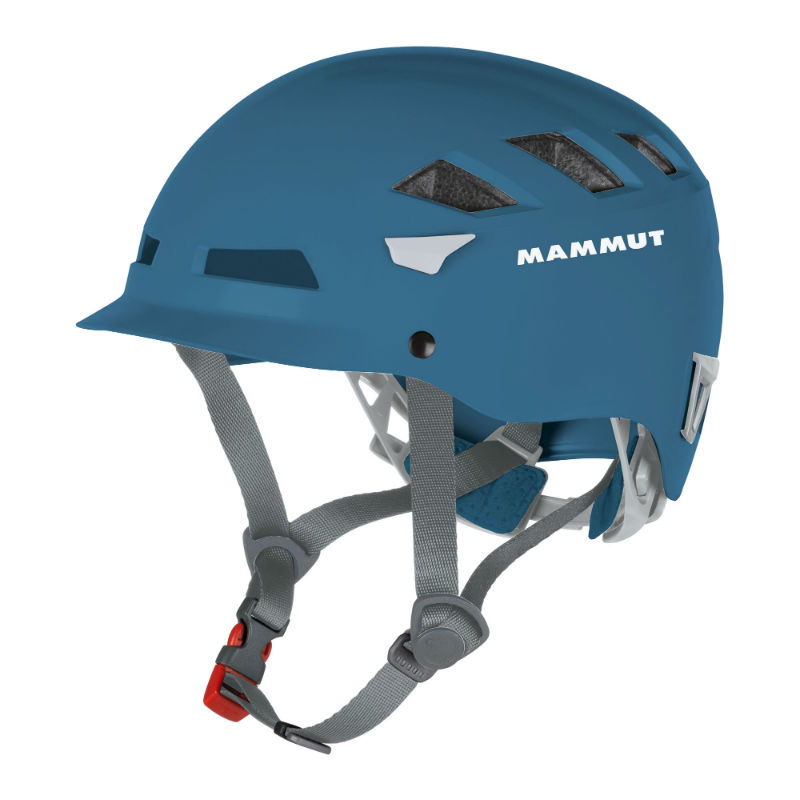El Cap 2018
Description
The climbing helmet with style - the El Cap's stylish design leaves no excuse for not wearing a helmet when climbing. With its visor and narrow design, the El Cap creates a completely new look. In technical terms, the hybrid helmet consists of a robust outer shell combined with an innovative 2K-EPS core (two styrofoam layers of different thicknesses are combined in the Conehead method) to ensure maximum absorption and the highest possible safety. The many ventilation openings and perfect fit make it extremely comfortable to wear.
Retail price
This Product is Hard to Find.
We don’t know where you can buy this item online in the US. We’ll continue to check all the major retailers and will update this page as soon as we find one.
If you know where to find this online in the US, let us know, and we’ll add the link.
Weight (g)  Weight (g)In grams, the weight, as stated by the manufacturer/brand. If there are differences in weight (due to multiple size or optional accessories) we note those here. | 315 g Size 1: 315 g / 11.1 oz |
Gender  GenderThis is the gender as stated by the manufacturer/brand. We use the term "Men" and "Unisex" interchangeably, as there is no difference between these types of helmets. |
Unisex |
Size Range  Size RangeThe sizing options of the helmet according to the manufacturer. | 20.00 in - 24.00 in Size 1: 52-57 cm / 20-22 in |
Features  FeaturesBike Cert (EN 1078)The EN certification for helmets used for bicycling and skating. The major difference in testing 1078 involves needs for more head coverage and for the helmet to pass a deflection or 'roll-off' test of the impact force. BrimHaving a brim on a helmet may be inconsequential to some climbers but they make a great additional bit of protection against sun, rain and falling debris like small rocks or verglass. Multiple SizesThis is helpful for those with particularly small or large heads because helmets that come in 2 or 3 sizes cover a broader range of head size. Usually these are denoted as size 1 or 2, though some brands have S/M and M/L. Face Shield CompatibleFace shields are a part of PPE that could be handy when drilling, developing and cleaning particularly dirty remote routes. Usually only used by work at height professionals. MIPS technologyMIPS or Multidirectional Impact Protection System is a technology designed to reduce the amount of impact force that makes it to the brain. This is accomplished by adding a low friction cap between the liner and the helmet, allowing the shell to deflect around the head rather than transfer the forces from impact directly to the wearer. Many bicycle helmets include this feature and it is starting to be applied to sports like skiing, motorcycling and climbing. Many MIPS helmets are also EN1078 compliant. Ponytail CutoutSo far these are only found in "women's" helmets. It's a cutout / notch area that accommodates a low hanging ponytail hairstyle. RECCO® reflectorThese are used in locating someone missing or buried in an avalanche and are becoming more common in climbing gear due to the increased popularity of ski mountaineering. Though they are more often sold as something to add onto the helmet than being built into one, some manufacturers have begun to build them in. Ski Cert (EN 1077)The EN certification for helmets used for climbing and skiing. This test is simpler than the EN/UIAA one performed for helmets in general, but increases the amount of force that a helmet must endure. Likely this to simulate the faster speeds involved with downhill skiing impacts versus rockfall or climber accidents. This cert becoming more common in helmets as SkiMo popularity increases and more climbers are adding backcountry skiing to their mountaineering repertoire. |
Brim Multiple Sizes |
Quick Adjust  Quick AdjustQuick Adjust refers to the straps of the helmet. Do you want the ability to ability to "quickly" adjust the fit. This could be a dial, or other plastic pieces. Really, most climbers don't need to change the fit of the helmet often, unless you're climbing with and without hats, or you have big hair that flattens and then requires tightening after climbing for awhile. |
Yes |
Vents  VentsRefers to openings in the helmet body to allow air flow. Commonly found in most helmets these days, but often more so in foam and hybrid foam helmets than traditional hardshell polycarbonate shells. Learn More
Click here to read more on helmet construction |
Yes |
Headlamp Compatable  Headlamp CompatibleMany helmets include hooks or clips for holding a standard headlamp in place, which is quite useful for the caver or alpinist. Ask any climber who has been benighted and they’ll tell you just how useful this feature can be. |
Yes |
Face Shield Compatable  Face Shield CompatibleFace shields are a part of PPE that could be handy when drilling, developing and cleaning particularly dirty remote routes. This feature isn't very common in climbing helmets and usually only used by work at height professionals. |
No |
| Certification | EN, UIAA |
The El Cap is comfortable, reasonably weighted and robust. I went on a mountain bike demo afternoon and used it as my head protection. Initially I had to confess to a group of mountain bikers I didn’t own a cycle helmet then explain I had brought a climbing one. When I put it on I didn’t get any stick, it actually received good comments on its styling.
The El Cap has done what it’s supposed to, it protected my head from falling debris and when I clattered it on a small overhang. It also helped when I came off the bike and I bounced off the ground.
All in all it performs very well in and out of its environment. And I would recommend it to winter, sport and trad climbers.
So, is it possible to draw conclusions on these helmets in the light of the earlier discussion? All are fine, but understanding now more about how the design of helmets has to follow the testing standards, I'm less convinced that hybrids are the all-rounder's answer. The El Cap is decent lid and its little peak just makes it look different and cool. I will be wearing it this winter for ice climbing. But now understanding the lack of protection around brim inherent in (almost all) hybrid designs, the idea of taking a swinging leader fall - on bolts or trad gear - is less appealing in such helmets. I spend three quarters of my year rock climbing, and I'm going to carry on wearing a foam lid when I do. The Rock Lite sent to me to review now has a bunch of scratches on its over my right temple from last weekend. I'm not sure if they got there whilst I was chicken wing-grovelling up a local offwidth, or when I missed the crux foothold that should have allowed me to escape its evil clutches and instead pin-balled 10 foot back down the bomb-bay chimney at the back of which this cruel crack lurks. Bruised and exhausted, this drove home the point that having a centimetre of foam between the side of my skull and the rock is preferable to just a couple of millimetres of hard plastic. Of the foam lids, I liked the Edelrid best, in part because of the Germanic engineering of its back cradle, but mainly just because it fitted me well. The Grivel is great to wear, super low profile, wonderfully light and very well ventilated, but its design is showing its age: I think the strapping and size adjustment could be refined, as could it's torch clips. The Rock Lite doesn't fit my head perfectly, but if it fits you there's not much to dislike about it. It has already done its job for me in leader fall and you can't ask more of a helmet than that.
Love it or hate it, climbing is getting steezier. From neon clothing to reflective sunglasses, flash is back. So when climbing helmets needed a makeover, Mammut introduced the El Cap, which breaks away from the standard bucket helmet with a narrower design and a low-profile visor. At first glance, this helmet looks more apt for kayaking or snowboarding, but the El Cap more than holds its own on rock. With 12 ventilation openings, adjustable headband, and relatively light weight (12 oz.), this is a well-built helmet that looks good. (It comes in two sizes for pinheads and brainiacs.) “The hat stayed on tight even during big whips,” reports our tester, “and the visor kept the sun out of my eyes. It’s not as light as some helmets on the market, but I’m psyched on it. I can’t wait for one with built-in headphones.” We’re not sure the UIAA would approve, but it’s probably coming.
No voice but the video shows all around views of Mammut El Cap Helmet.
This video talks about four helmets, at 3:00 it talks about El Cap and at 4:48 it talks about Rock Rider.
Warning, cleaning, storage and transport with instructional pictures.

